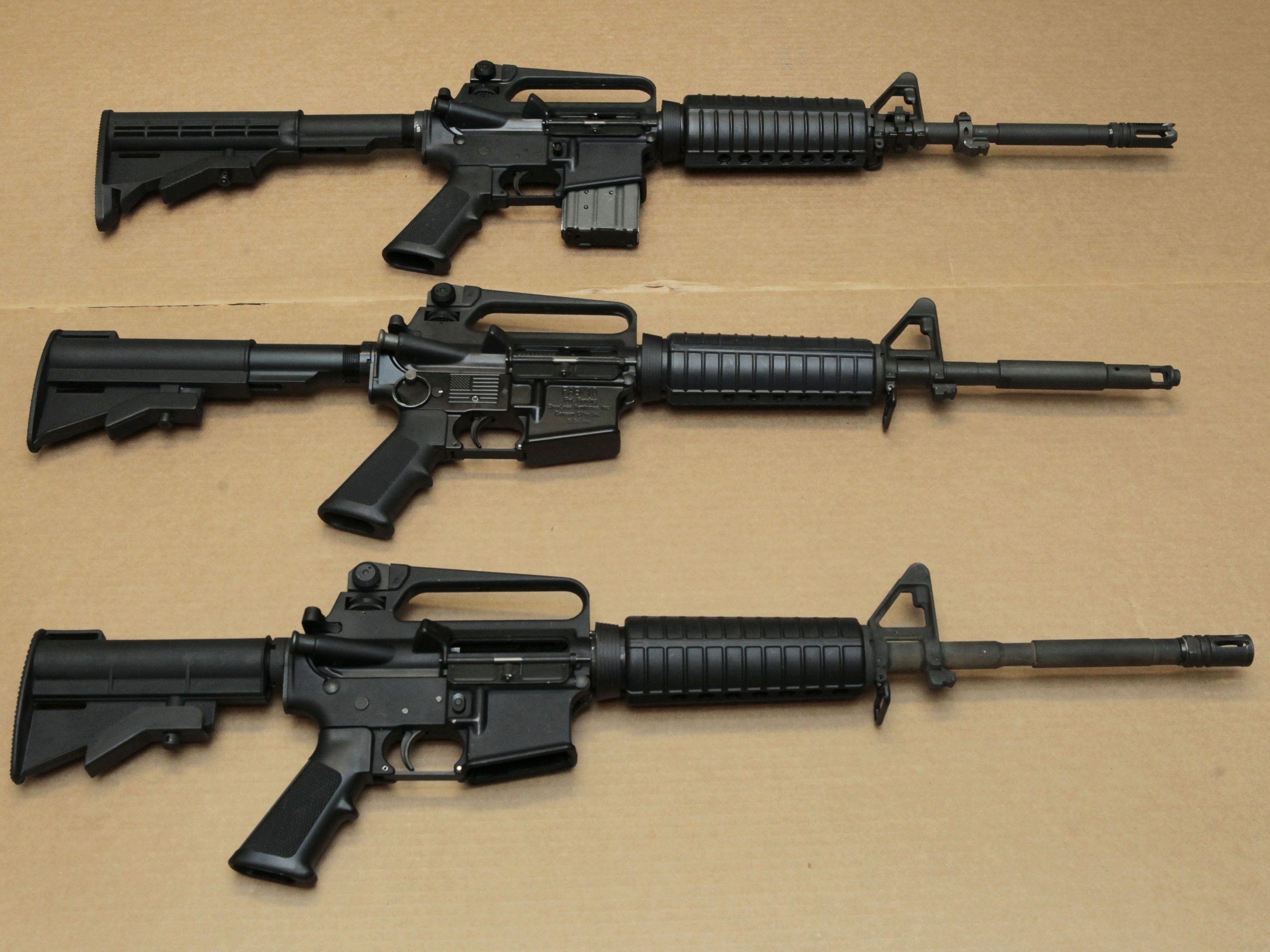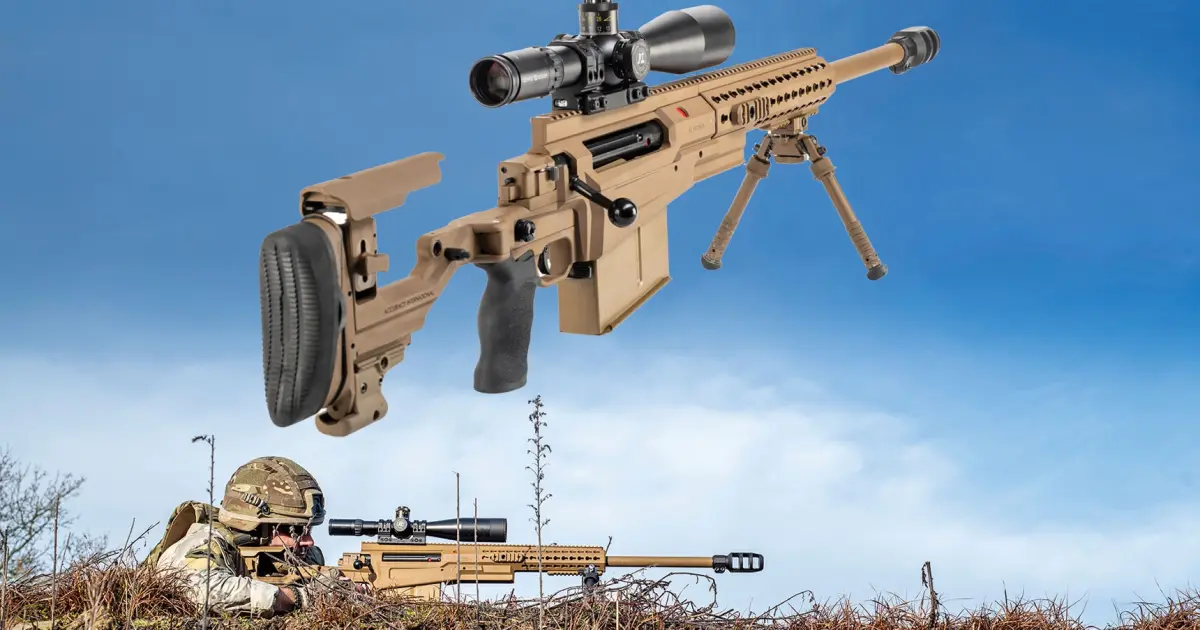Assault rifles are some of the most iconic and controversial firearms in modern warfare. Known for their ability to fire rapidly and for their versatility in combat situations, assault rifles have revolutionized military tactics and armed conflicts. These firearms are designed to provide a balance of firepower, portability, and accuracy, making them ideal for both individual soldiers and military units.
In this article, we will explore the history, mechanics, characteristics, uses, and impact of assault rifles, shedding light on why they are considered the standard-issue weapons for modern military forces worldwide.
1. What is an Assault Rifle?
An assault rifle is a type of selective-fire rifle that is designed to fire intermediate cartridges. These rifles are capable of both semi-automatic (one shot per trigger pull) and fully automatic (continuous fire as long as the trigger is held) or burst modes. The hallmark feature of an assault rifle is its ability to offer a combination of range, power, and rate of fire that is suitable for both close-quarters combat and medium-range engagements.
Key features of an assault rifle include:
- Intermediate Cartridge: Assault rifles use intermediate cartridges, which are more powerful than those used in submachine guns but less powerful than those used in battle rifles. This allows for effective fire at medium ranges while maintaining manageable recoil.
- Selective-Fire: Most assault rifles can switch between semi-automatic and fully automatic or burst modes, giving soldiers the flexibility to adapt to different combat situations.
- Detachable Magazine: Assault rifles typically use detachable magazines that hold between 20 to 30 rounds, providing soldiers with sufficient ammunition to engage multiple targets.
2. History of Assault Rifles
The history of the assault rifle is closely tied to the evolution of modern warfare and military tactics. The development of assault rifles was driven by the need for a more versatile, rapid-fire weapon that could engage targets at both short and medium ranges.
- The Sturmgewehr 44: The first true assault rifle is widely considered to be the Sturmgewehr 44 (STG 44), developed by Nazi Germany during World War II. The STG 44 was chambered in 7.92×33mm Kurz, an intermediate cartridge that offered a good balance of range and recoil. Its selective-fire capabilities and compact design made it highly effective in close-quarters combat and on the battlefield.
- Post-War Developments: After World War II, the concept of the assault rifle gained traction among military forces around the world. Many of the lessons learned from the STG 44 were incorporated into post-war rifle designs. The Soviet Union’s AK-47, introduced in 1947, became one of the most famous and widely used assault rifles in history. Its simple, durable design and ability to function in harsh conditions made it a preferred weapon for Soviet and other communist forces during the Cold War.
- The M16 and Beyond: In the West, the development of the M16 by Eugene Stoner in the 1950s marked another milestone in the evolution of the assault rifle. Chambered in the 5.56×45mm NATO cartridge, the M16 was lighter and more accurate than its predecessors and became the standard-issue rifle for U.S. troops during the Vietnam War. The M16 later evolved into the M4 Carbine, which continues to serve as the primary assault rifle for U.S. military forces.
3. How Do Assault Rifles Work?
Assault rifles use the energy from the fired cartridge to cycle the action and load the next round into the chamber. The mechanism typically involves a gas-operated system, which uses the gas from the fired round to drive a piston that cycles the action. Below is a general description of how an assault rifle works:
- Firing the Round: When the shooter pulls the trigger, the firing pin strikes the primer of the cartridge, igniting the propellant. This generates gas that propels the bullet down the barrel.
- Cycling the Action: The gas or recoil from the fired round is harnessed to cycle the action. In gas-operated rifles, the gas is diverted through a port in the barrel and drives a piston or direct impingement system that pushes the bolt carrier group rearward. This ejects the spent casing and chambers the next round.
- Selector Switch: Assault rifles are equipped with a selector switch that allows the shooter to choose between semi-automatic, fully automatic, or burst-fire modes. This gives soldiers the flexibility to use controlled, accurate shots or to unleash sustained fire in combat situations.
- Loading the Next Round: After the spent casing is ejected, the action chambers the next round from the magazine, making the rifle ready to fire again.
The combination of rapid fire, manageable recoil, and effective range makes assault rifles ideal for combat situations, where flexibility and adaptability are key.
4. Characteristics of Assault Rifles
Assault rifles share several common characteristics that make them ideal for modern military combat:
- Intermediate Cartridge: Unlike battle rifles, which use full-power cartridges like the 7.62×51mm NATO, assault rifles are chambered in intermediate calibers, such as the 5.56×45mm NATO or 7.62×39mm. These rounds provide a good balance of recoil control, range, and lethality at medium distances.
- Selective-Fire Capability: Assault rifles typically offer selective fire, allowing the shooter to choose between semi-automatic and fully automatic or burst firing modes. This allows the rifle to be used in a variety of combat scenarios, from precision shots to suppressive fire.
- Lightweight and Compact: Assault rifles are designed to be lightweight and compact compared to battle rifles. This makes them easier to carry and maneuver in close-quarters combat, while still retaining sufficient power for medium-range engagements.
- High Magazine Capacity: Most assault rifles use detachable magazines that hold between 20 and 30 rounds, allowing soldiers to engage multiple targets before needing to reload. Some assault rifles, such as the AK-47, can also be fitted with larger magazines.
5. Famous Assault Rifles
Several assault rifles have become iconic due to their widespread use and impact on modern warfare. Some of the most famous assault rifles include:
- AK-47: Developed by Soviet engineer Mikhail Kalashnikov in 1947, the AK-47 is one of the most well-known assault rifles in the world. It is chambered in 7.62×39mm and is famous for its ruggedness, simplicity, and reliability in harsh conditions. It has been used by military forces, insurgents, and terrorists around the world and has become synonymous with modern conflict.
- M16 and M4 Carbine: The M16, introduced in the 1960s, was a revolutionary design that featured a lightweight frame, gas-operated mechanism, and a 5.56×45mm NATO cartridge. It became the standard rifle for U.S. forces during the Vietnam War. The M4 Carbine is a more compact version of the M16, widely used by the U.S. military today.
- Heckler & Koch G36: A modern assault rifle used by the German military, the G36 is chambered in 5.56×45mm NATO and is known for its reliability and accuracy. It features a polymer frame, making it lightweight, and uses a gas-operated, rotating bolt mechanism.
- FN SCAR: The FN SCAR (Special Operations Forces Combat Assault Rifle) is a modular assault rifle developed by the Belgian company FN Herstal. It is chambered in both 5.56×45mm NATO and 7.62×51mm NATO, and its versatility has made it a favorite of military special forces around the world.
6. Uses of Assault Rifles
Assault rifles are primarily used in military applications but have also found their way into law enforcement and civilian use in some regions. Some of their key uses include:
- Military Combat: Assault rifles are the primary weapon of choice for soldiers in modern combat. Their combination of rate of fire, range, and accuracy makes them suitable for a variety of combat scenarios, including urban warfare, counterinsurgency, and conventional battles.
- Special Operations: Special forces and elite military units often use assault rifles for operations that require precision, mobility, and versatility. The modular design of many modern assault rifles allows for quick customization based on mission requirements.
- Law Enforcement: In certain law enforcement contexts, assault rifles are used by tactical teams to deal with high-threat situations, such as hostage rescues, counter-terrorism operations, and active shooter scenarios.
- Civilian Ownership: In some countries, civilian gun owners are legally allowed to possess assault rifles, often for sporting purposes like target shooting or hunting, though this is a controversial subject in many regions due to concerns about their lethality.
7. Advantages and Disadvantages of Assault Rifles
Advantages:
- Rate of Fire: Assault rifles’ ability to fire rapidly and in different modes (semi-automatic, fully automatic, or burst) makes them versatile for various combat situations.
- Intermediate Cartridge: The use of intermediate cartridges provides a good balance between range and recoil, making them more manageable than battle rifles and suitable for rapid fire.
- Modularity: Many modern assault rifles are highly modular, allowing for customization with different optics, stocks, barrels, and accessories.
- Reliability: Assault rifles, particularly the AK-47, are known for their reliability in harsh environments, including dirt, mud, and extreme temperatures.
Disadvantages:
- Recoil: While intermediate cartridges produce less recoil than full-power cartridges, the recoil from fully automatic fire can still affect accuracy, particularly in inexperienced users.
- Accuracy: Assault rifles, especially when used in fully automatic mode, may not be as accurate at long distances compared to sniper rifles or battle rifles.
- Size: While compact compared to battle rifles, assault rifles are still heavier and larger than submachine guns, which can affect mobility in certain situations.
8. Conclusion
Assault rifles have become a cornerstone of modern military doctrine, offering soldiers a powerful, versatile tool for combat. Their ability to deliver rapid, sustained fire while maintaining a reasonable level of accuracy and range has made them essential for modern warfare. Whether in the hands of regular infantry or special forces, assault rifles continue to shape the way wars are fought and the strategies employed on the battlefield.
As technology continues to evolve, so too will the design of assault rifles, further improving their effectiveness and versatility in combat. While they remain a subject of debate and controversy, particularly in civilian contexts, assault rifles are undeniably central to the history of modern firearms and military operations.



